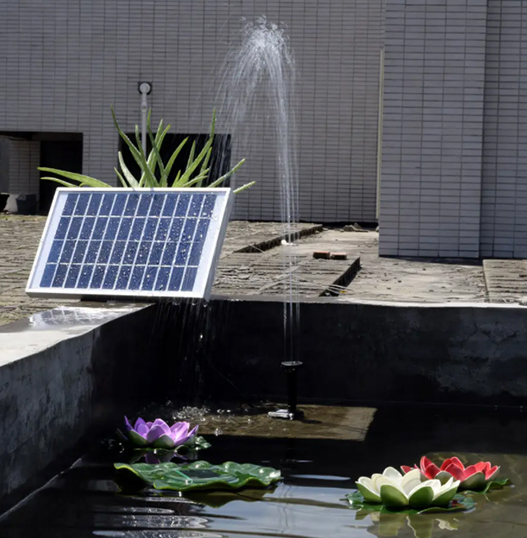Adding a fountain to your pond or pool has sound reduction benefits, so if you live on a busy urban street, it can be a smart and stress-relieving way to cancel out noise pollution.

Of course, water fountains have their drawbacks, too. Running a pump throughout most of the day adds a little bit to your carbon footprint, increasing your electricity use and adding a small charge to your monthly bills.
That’s where solar-powered garden equipment can really come in handy. Solar water pumps run completely off the energy of the sun—or a backup battery pack—so you’re not draining energy off the grid for a mostly ornamental effect.
Believe it or not, ponds, pools, and waterfalls actually conserve water in the long run, at least according to water feature experts. Meanwhile, there’s a benefit to moving water as well—compared to standing water, that is. Water that is cycled and recycled through a pond or pool using a solar water pump is less attractive to mosquitos and resists the growth of algae that can make a water feature appear murky and muddy.
Unfortunately, your average electric water pump is still pulling energy off your grid. While most residential landscaping pumps only require about as much energy to run as your average table lamp, it’s still energy burned—especially for a feature that’s largely decorative. Pairing a pond or pool with a solar pump can significantly reduce your water use and lower the carbon footprint of your lawn. Plus, they look great.
Ways to increase the efficiency of a solar pond pump:
There are a few ways to increase the efficiency of a solar pond pump so you can get maximum benefits. Some of these are:

- Placing solar panels to catch the strongest sun (11am-3pm).
- Cleaning solar panels regularly.
- Cleaning solar pump regularly.
- Decreasing fountain height.
- Improving water quality (less pump work).